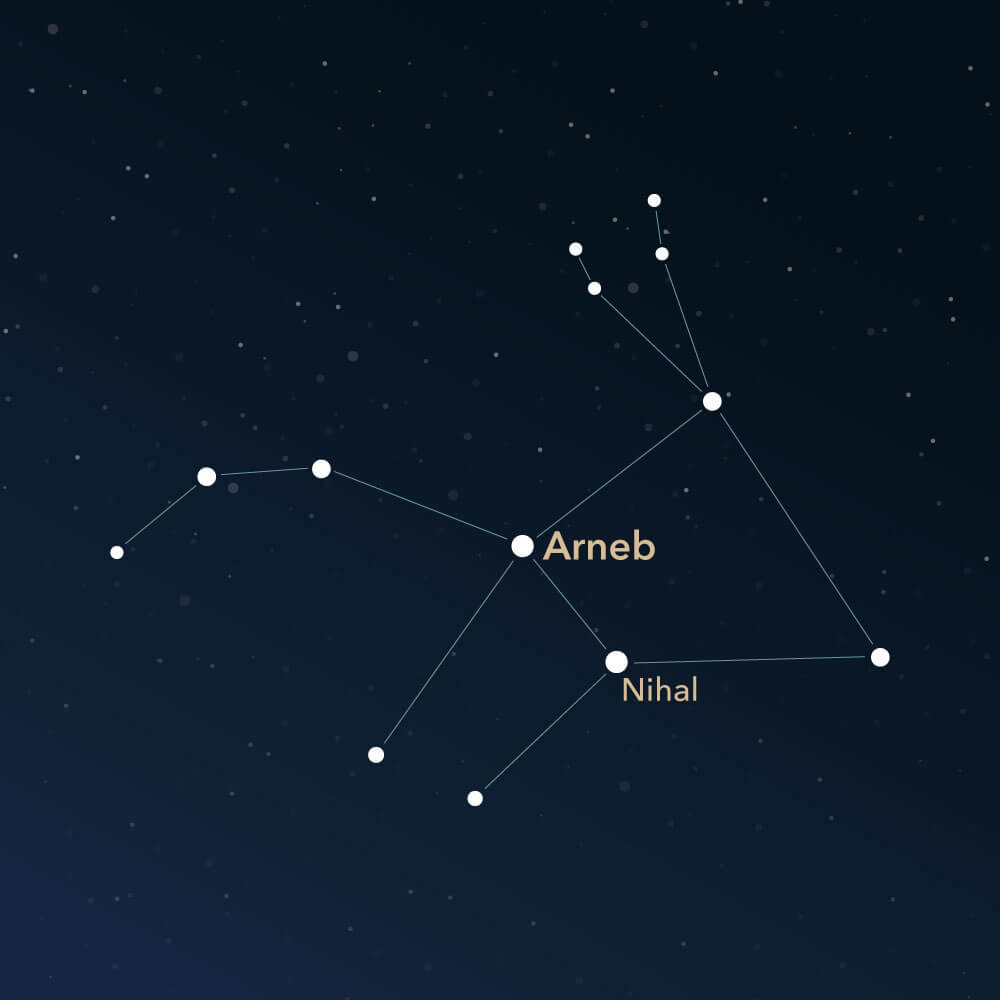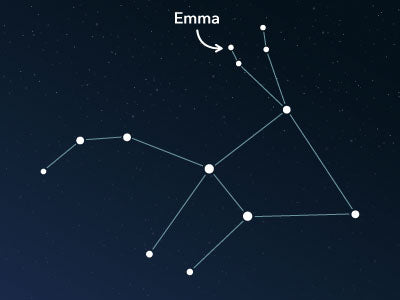The constellation Lepus
Caratteristiche
- Nome latino
- Lepus
- Emisfero
- Emisfero meridionale
- Visibilità
- December - January
- Area
- 290 deg²
- Stella più luminosa
- Arneb (HIP number 25985)
- Specialità
- Globular cluster

The Lepus symbolizes a hare and is one of the 48 constellations the Greek-Roman astronomer Claudius Ptolemy already determined in ancient times. It is a small and inconspicuous constellation in the southern hemisphere. Nevertheless, it contains an interesting deep-sky object.
Hemisphere, visibility, and area
The constellation Lepus is located in the southern sky and can be seen from all locations south of the equator. In the northern hemisphere, it is visible up to the 63rd parallel, which corresponds to regions such as Trondheim in Norway.
The best months to observe the constellation are from December to February. In latitudes like Central Europe, the north of the US, or Canada, it appears low above the horizon during this time.
It has an area of approximately 290 square degrees, which ranks it in the middle of all 88 constellations.
The constellation of stars is not particularly striking. Only two stars are brighter than the third magnitude. The brightest of them is the star Arneb (Latin: α Leporis, Alpha Leporis). Its proper name comes from Arabic and means "Hare." It is a supergiant star at a distance of about 1,940 light-years. Arneb has an apparent magnitude of roughly 2.58 and is 13,000 times more luminous than our sun.
To find the constellation in the night sky, it is helpful to look for the prominent constellation of Orion, as it is located immediately north of Lepus. Figuratively speaking, the Lepus lies at the feet of Orion. Another well-known neighbor is Eridanus, which is east of Lepus. The constellations of Sculptor, Columba, Canis Major, and Monoceros are also adjacent neighbors.
Specialties in the constellation
Northwest of the bright shining star Arneb lies the globular cluster NGC 1904, also known as M79 (Messier 79). The latter name comes from the French astronomer Charles Messier. It has an apparent magnitude of about 8 and is located at a distance of approximately 40,000 light-years.
M79 can already be seen as a nebulous patch in binoculars. With a medium-sized telescope, some individual stars can be observed. M79 lies in the southern part of Lepus, below the star Nihal. Due to its southern location, it cannot be seen from Central European regions.
Mythology
There are various versions of the mythological origin of the constellation.
According to the Roman astronomer Huyginus, the Lepus was placed in the sky for the hunter Orion. Orion was an enthusiastic hare hunter and was supposed to have his own hare in the sky.
Other authors from ancient times say that the origin of the constellation is connected to the island of Leros.
At that time, there were no hares on Leros until a visitor brought a pregnant doe. The inhabitants liked the new animal in their homeland, and hare breeding became very popular. However, the strong reproduction of the hares became a problem within a few years. Eventually, there were so many hares on the island that they destroyed entire crops and caused a famine. To counteract this, the hares were hunted.
Finally, the constellation Lepus was set in the sky as a warning of the dangerous fertility of the animal.
Further interpretations are described in the literature.
PubblicatoLeggi altri articoli interessanti

An overview of all 88 constellations
Learn more about all 88 constellations and read interesting information about the mythology, visibility, and features.

App Planetario
Discover the night sky with our planetarium app!
Available for iOS and Android.

Dai un nome a una stella nella costellazione Hare
Name a star in a constellation and create something that lasts for eternity.